
|
WEEK |
TOPIC |
ASSIGNMENTS &/OR CLASS WORK |
Before Class Today |
|
#5 |
Case Study I: Acids, pH, and Buffers
Case Study I: Law of Mass Action
|
In this “clicker case,” a three-year-old girl gets into the medicine cabinet and ingests an unknown number of aspirin tablets.
The case is used to discuss the Law of Mass Action, chemical equilibrium and equilibrium constants, pH, and weak acids and buffers in the context of medical management of a life-threatening emergency |
Case Study Part A: Case studies are a collaborative effort and usually take two class periods to complete. Begin reading the case study assignment on Blackboard and refer to the web link: Clickers will be supplied for classes that require your response using clickers. In-class. Objectives:
Case Study Part B: http://sciencecases.lib.buffalo.edu/cs/collection/detail.asp?case_id=498&id=498 Clickers will be supplied for classes that require your response using clickers. Objectives:
|
|
#6
|
The Process of Science: Scientific Ethics
Opportunity Project Revisited
|
e-PF6 Process of Science:: Discussion on Ethics
|
Process of Science: Scientific Ethics Read: Scientific Ethics and describe 5 important take-away concepts from your reading.
|
|
#7
|
Case Study II: Between the Living and the Dead
|
Case Study II Part A: As Jen pores over her introductory biology textbook, she falls asleep and enters a nightmarish world in which bacteria and viruses dwarf human beings. Your final work will be posted on eportfolio.
Case Study II Part B: The case includes a follow-up assignment in which students explore the risks and potential benefits of using bacteriophage to control bacterial disease.
|
Case Study II Part A: Case studies are a collaborative effort and usually take two class periods to complete. Begin reading the case study assignment on Blackboard and refer to the web link: http://sciencecases.lib.buffalo.edu/cs/collection/detail.asp?case_id=378&id=378 Objectives:
Case Study II Part B: Objectives:
|
|
#8 |
Opportunity Project Presentations
Career Goals |
e-PF5 Final Presentation of your Opportunities
PF7: Reflection on Career Goals Planning your major and planning an interview with a faculty member. |
What are your career goals and which major do you think that you’d like to study?
|
|
#9 |
The Innocence Project
Communication in the Sciences: Source Reliability |
e-PF8: In-class presentation of a case from the Innocence Project
e-PF9: How to Be a Wise Consumer of Scientific Research. In-class assignment designing a concept map using examples from Communication in the Sciences Website.
|
https://www.innocenceproject.org/ Choose a case history from the website and summarize in your own words what this case involved and why was the individual wrongly convicted.
Read: Understanding Scientific Journal and Articles
Utilizing the Scientific Literature Describe 5 important take-away concepts from your reading. Put your ideas in outline form using the example from the library: https://www.lib.jjay.cuny.edu/how-to/write-an-outline
|
